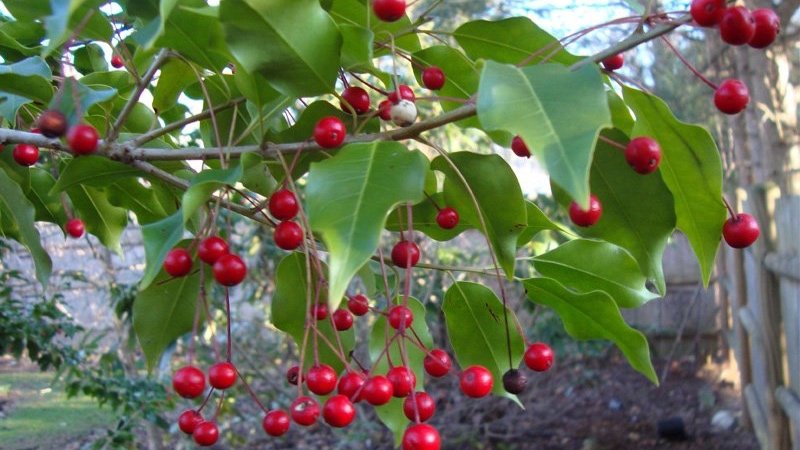The Longstalk Holly
/By Joan Butler
Longstalk holly (Ilex pedunculosa) is a unique and beautiful addition to the home garden. This large evergreen holly, native to China and Japan, was first grown in North America from seeds planted at the Arnold Arboretum in 1907. It has proven to be long-lived and extremely cold tolerant, with some of the original specimens still gracing the Arboretum landscape. It is dependably hardy through Zone 5. In my garden, it has survived temperatures as low as -10 degrees with ease.
Like all hollies, it prefers a well-drained, slightly acidic soil. It thrives in partial shade and has no serious pest or disease problems. Its smooth, green leaves are 2-3 inches long x 1 ½ inches wide, with a satiny sheen and gently rippled edges that catch the light.
Its most unique feature is the bright red berries that hang from one- to two-inch long slender stalks (pedicles), resembling tiny cherries. These fruits (drupes) are one-quarter inch in diameter and ripen in early fall. They persist on the plant well into winter, until they are eaten by birds and other wildlife. As is common in hollies, both male and female plants are needed in order for the female to set fruit.
My own longstalk hollies were planted over 25 years ago. They were slow-growing at first, then hit their stride and are now 12-foot tall beauties that add grace and distinction to my shrub border (upper right in photo). Their long branches are very supple, and it is amusing to watch squirrels as they try to inch their way along the swaying branches to nibble on the tasty fruits. Towards the end of winter, the only berries left uneaten are at the very tips of the branches, and I have seen robins on the ground attempting a weird jump/fly up to a low branch to grab a berry on their way down.
The longstalk holly is surprisingly under-used in the home landscape. Its lustrous, wavy leaves add depth and motion to the garden as they catch the light of the sun. Its shiny red, dangling berries add unique beauty and provide food for birds. Its graceful form adds elegance to the shrub border. In his book, Manual of Woody Landscape Plants, Michael Dirr calls it “the most handsome of the evergreen hollies that can be grown in northern gardens”. Easily grown, with few pests or diseases, and beautiful in all seasons, longstalk holly deserves a place in every home garden.
You Might Also Like
















